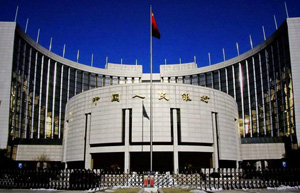China's targeted RRR cuts boost economic restructuring
(Xinhua) Updated: 2014-06-03 14:00Guo Tianyong, a researcher at the Beijing-based Central University of Finance and Economics, said the cabinet's call to optimize the financing structure is a key point in the country's push for economic restructuring.
Railway and water-related projects, energy, shanty-town renovations, affordable home construction and municipal infrastructure projects will have more credit support. The upgrading of companies, emerging industries of strategic importance, high-tech sectors and daily services sectors will also enjoy favorable credit policies, Ji said.
At the same time, the central bank's monetary policies will squeeze credit lending out of low-efficiency industries, with local government financing vehicles, industries with excessive production capacity and the real estate sector likely to have their borrowing strictly controlled, Ji said.
Zhang Xiaopu, a policy research official at the China Banking Regulatory Commission (CBRC), said that the CBRC will further reforms in the banking sector with an eye to enhance risk control and bank services. Zhang's remarks come as the country faces the rapid rise of shadow banking, which has brewed financial risks and raised companies' financing costs in recent years.
Some changes are in sight. Data from the People's Bank of China, the central bank, said that banks' medium and long-term loans to service sectors rose 15.5 percent year on year as of the end of April, with the growth rate picking up by 1.8 percentage points. In contrast, medium and long-term credit to industries with excessive production capacity grew only 5.9 percent, down 1.6 percentage points.
|
 |
 |
| Central bank in a monetary dilemma | Money market funds must come under controls |
- World Cup spurs sales of colorful wigs
- Male models help push shoe sales
- Bumper year forecast for China's wheat farmers
- Apps shine at Apple's WWDC
- China's non-manufacturing PMI rises in May
- US export policy change said to 'help both sides'
- Listed company with only 7 employees
- ST Electronics looks to begin competing overseas

















